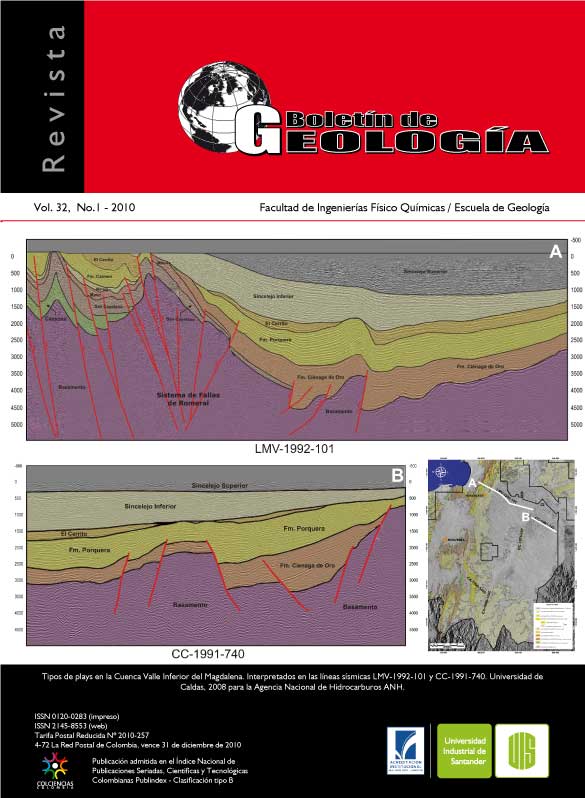Cómo citar
Resumen
RESUMEN
La anisotropía es una propiedad de las rocas la cual es generada por diversos factores. Comprender cuáles son estos factores requiere un análisis extenso. Para contribuir en dicho análisis, en esta investigación se estudió la densidad de microfracturas planteando que éstas son generadoras de anisotropía en las rocas. Para evaluar el impacto de las microfracturas en la anisotropía, en este trabajo, se desarrolló una metodología experimental de laboratorio, en la cual se utilizaron modelos sintéticos de rocas con microfracturas simuladas, variando la densidad de microfracturas (inclusiones); y se construyó un dispositivo para realizar mediciones de ondas de ultrasonido. La anisotropía se obtuvo a partir de las mediciones ultrasónicas, estableciendo cómo influye la densidad espacial de las microfracturas en las velocidades de las ondas longitudinales o de compresión P y de corte o cizalla S. A partir de los resultados obtenidos, se estableció una relación cuantitativa entre la densidad de microfracturas y la anisotropía de las ondas S cuando se propagan a través de un medio fracturado de composición sintética, aportando evidencia de laboratorio con respecto a (1) el papel de las microfracturas como generadoras de anisotropía; (2) la relación directa entre la anisotropía de la onda S desde una densidad de microfracturas de 0% al 4.96% y para valores mayores del 4.96% la anisotropía presenta una disminución; y (3) la variación relativa de la anisotropía de las ondas P y ondas S.
Palabras claves: densidad de microfracturas, parámetros anisótropos, simulación de microfracturas, ondas ultrasonido.
METHODOLOGY TO DETERMINE DENSITY OF MICROFRACTURE ON ROCKS FROM ANISOTROPICS PARAMETERS: AN APPROXIMATION IN SYNTHETICS CORES
ABSTRACT
The anisotropy is a property of the rocks which is generated by diverse factors. To understand which are those factors, is required an extensive analysis. To contribute in the analysis mentioned before, this investigation studied the microfractures density planning that the microfractures anisotropy generators in the rocks. To evaluate the impact of the microfractures in the anisotropy, this work develops an experimental laboratory methodology, in which synthetic models of rocks were used. This models were elaborated with simulated microfractures (inclusions), varying their density. The anisotropy was obtained thanks to ultrasound measurements (an ultrasound device measurement was build up), finding how influences the space density of the microfractures in the speeds of the longitudinal waves or compression (P) and shears (S). As of the obtained results was establish a quantitative relationship between the microfractures density and the anisotropy from ultrasonic waves (S) when they spread through a fractured layer of synthetic composition, contributing with laboratory evidence due to the fact that (1) the microfractures role as anisotropy generators; (2) the direct relationship between the anisotropy from wave S and the density of microfractures from 0% to 4.96% and for values bigger than 4.96% the anisotropy will decrease; and (3) the relative variation of the anisotropy of the waves P and waves S.
KeyWords: Anisotropy, microfracture density, anisotropic parameters, simulation of microfracture, ultrasound wavesAnisotropía.
